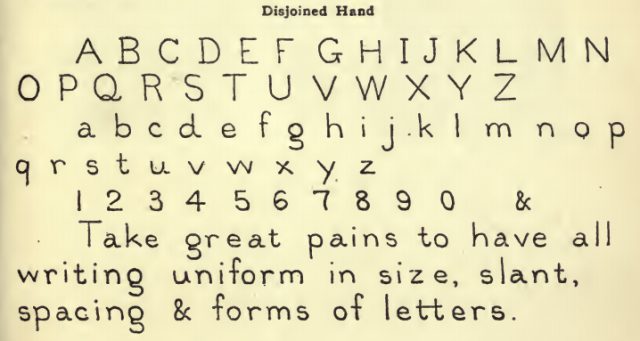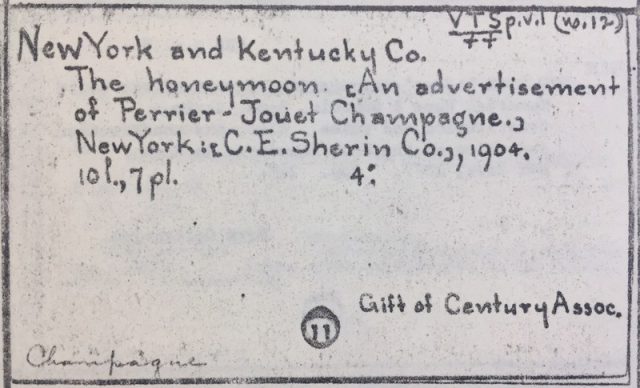From Atlas Obscura:
In September 1885, a bunch of librarians spent four days holed up in scenic Lake George, just over 200 miles north of New York City. In the presence of such library-world luminaries as Melvil Dewey—the well-organized chap whose Dewey Decimal System keeps shelves orderly to this day—they discussed a range of issues, from the significance of the term “bookworm” to the question of whether libraries ought to have a separate reference-room for ladies.
They then turned their attention to another crucial issue: handwriting. As libraries acquired more books, card catalogs needed to expand fast in order to keep track of them. Though the newly invented typewriter was beginning to take hold, it took time and effort to teach the art of “machine writing.” Librarians still had to handwrite their catalog cards. And this was causing problems.
“The trouble in handwriting,” said Mr. James Whitney, of the Boston Public Library, “is that there is apt to be too much flourishing.”
Professor Louis Pollens of Dartmouth College agreed: “We want a handwriting that approaches as near to type as possible, that will do away with individual characteristics.”A Mr. C. Alex Nelson, of the Astor Library in New York, then mentioned that “T.A. Edison, the inventor” had lately been experimenting with penmanship styles in order to find the most speedy and legible type of handwriting for telegraph operators. Edison, Nelson recalled, had ultimately selected “a slight back-hand, with regular round letters apart from each other, and not shaded.” With this style, Edison was able to write at a respectable 45 words per minute.
. . . .
This was the beginning of “library hand,” a penmanship style developed over the ensuing year or so for the purpose of keeping catalogs standardized and legible.

Dewey and his crew of “a dozen catalogers and librarians” spent, in his estimation, “an hour daily for nearly an entire week” hashing out the rules of library hand. They started by examining hundreds of card catalogs, looking for penmanship problems and coming up with ways to solve them. They concluded that the “simpler and fewer the lines the better,” and decided that, while a slant was best avoided, a slight backward slant was acceptable. Then they got to the more nitty-gritty stuff, such as whether to opt for a “square-topped 3” or a “rounded-top 3.” (The rounded-top 3 won out, as it is less likely to be mistaken for a 5 during hasty reading.)
Link to the rest at Atlas Obscura and thanks to Celia and others for the tip.

I used to love looking at old cards in the card catalog during slow times at the library.
Interesting to learn that librarians once had a professional hand, just as did architects. With CAD, I doubt the architects use their architectural lettering anymore for blueprints. The computer does it for them. 😀 But I enjoyed learning it, back in 1977, and enjoyed putting my skill to use.
Came over to the comments, thinking that surely this post would re-ignite the Cursive Wars.
Must be a slow weekend…
Of all the things I’ve never thought about, library letters are right up there at the top of the list. Also, I didn’t know Dewey was a person.
Do you suppose some libraries did create separate research rooms for ladies?